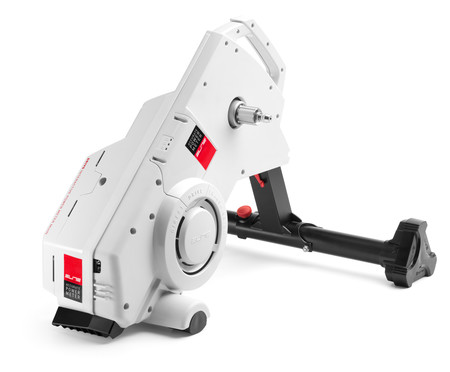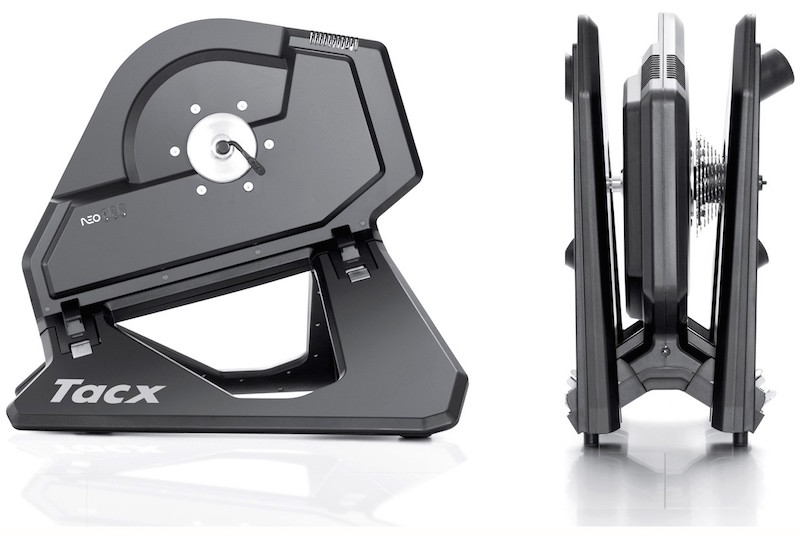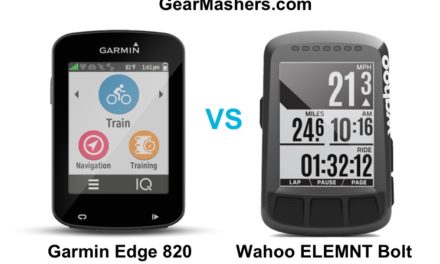
Top Indoor Electric Bike Trainers | 2018
So the weather is turning slightly cool here in Austin and thoughts of doing indoor training sessions are starting to pop up. I thought it would be a great time to cover some of the Top Indoor Electric Bike Trainers for the 2017 – 2018 season, also referred to as smart trainers or turbo trainers.
People seem to have a love – hate relationship with their trainers, but if you are looking to up your game this winter and next year, an electronic trainer could become your best friend.
Back in the early days, the Racermate Computrainer was about the best electronic trainer around.
While the design wasn’t flashy, ok it was down right boring, the Computrainer was a beast that could hold up to a lot of pounding. I even managed to do 3 sessions of 5 hours gearing up for an Ironman one winter. Let’s just say, it made me VERY mentally tough on the bike and maybe just a little crazy.
Fast forward to 2017 and Racermate ceased production of the Computrainer. An unfortunate event that probably could have been prevented if they had adapted to a changing market. Over the years new players have emerged including Wahoo Fitness, Elite, CycleOps, Tacx, and Kurt Kinetic.
Top Indoor Electric Bike Trainers
The current top indoor bike trainers include
- CycleOps Hammer (Direct Drive) – Retail: $1,199.00
- Elite Drivo (Direct Drive) – Retail: $1,299.00
- Elite Rampa (Wheel-On) – Retail: $649.00
- Kurt Kinetic Road Machine Electric (Wheel-On) – Retail: $569.00 for the Road Machine and $749.00 for the Rock and Roll.
- Tacx Neo (Direct Drive) – Retail: $1,599.00
- Tacx Genesis (Wheel-On) – Retail: $649.00
- Wahoo KICKR (Direct Drive) – Retail: $1,199.00
- Wahoo KICKR Snap (Wheel-On) – Retail: $599.00
DIRECT DRIVE vs WHEEL-ON
There are essentially two types of electronic trainers. The first is what is referred to as Direct Drive and requires the removal of the rear wheel. Most of the high end electronic bike trainers now are direct drive. The advantages of a direct drive style bike trainer is it eliminates the tire-to-roller contact, the trainers are usually more accurate, have a faster response time, and have higher wattage upward limit. The biggest disadvantage to a direct drive is having to remove the rear wheel.
Trainer Direct Drive Cassette Tools
Most Direct Drive trainers will also require you to install a rear cassette, which means you will need a few bicycle tools if you want to do it yourself including at the bare minimum a
- Cassette Lockring Tool
- Adjustable Wrench
- Sprocket Remover / Chain Whip
Park Tools has recently added some really cool tools that I just noticed were made specifically for cassette removal including a Cassettte Lockring Tool with handle and Chain Whip Pliers. These 2 tools eliminated the need for an adjustable wrench and they make it even easier to install or remove cassettes.
I have found that having these tools available makes life much easier should the need arise to install or remove a cassette.
The flip side to Direct Drive are trainers that use Tire-to-Roller or Wheel-On contact, like the Computrainer. The advantage of a Wheel-On approach is reduced setup time (You’re not having to remove the rear wheel), but the disadvantages include erroneous wattage readings due to calibration issues and tire slippage.
Another notorious problem is tire wear caused by roller friction. A lot of Wheel-On users end up using training tires and wheels when using their Wheel-On trainers. Some companies like Tacx have come out with tires that are specifically made for trainers. I have never tried one, but I have heard they don’t seem to wear as much as a traditional tire would.
Alternatives To Direct Drive and Wheel-On
Recently as in 2016, there was a 3rd option introduced by STAC Zero (https://www.staczero.com) that uses magnet resistance without a Direct Drive or Wheel-On approach. Instead they used powerful magnets to slow a wheel down and add resistance. Unfortunately STAC Zero doesn’t have an electronic trainer, but could have one in the future.
Tacx has come out with a treadmill trainer called the Tacx Magnum Smart. It looks like a traditional treadmill that has been extended for bike use. It’s wicked cool and has a similar sensation to riding rollers. Be warned though, the price is probably pretty steep.
Questions You May Want To Consider Prior To Purchasing A Trainer.
When considering an electronic trainer purchase a few key points should be addressed
Does the trainer communicate well with cycling software and other devices?
Currently if a trainer communicates using the following ANT+, ANT+ FE-C, & Bluetooth Smart you’re going to be able to connect it with many more devices over ones that don’t.
Does the trainer have a realistic road feel to it?
In general, the heavier the flywheel the more realistic the road feel is when using the trainer. Heavy flywheels tend to have a longer spin down than their lighter counterparts, giving it a more realistic feel.
How accurate is the Trainer?
Look for trainers that are at least + / – 3% with their accuracy. The higher the accuracy the more reliable the reading will be when calculating watt output, speed and resistance. Direct Drive Trainers are currently the most accurate, while Wheel-On Turbo Trainers fall a little bit short. Usually the best Wheel-On Turbo Trainers fall in the +/- 5% accuracy category.
How much does it cost?
High end electronic trainers fall in the range of $500 – $1,600, with the better ones usually being more expensive. Plan on paying double for a Direct Drive trainer vs a Wheel-On trainer.
How noisy is the Trainer?
Obviously the quieter the trainer the better. Trainers that use wind resistance tend to be the loudest, while those that use Direct Drive magnetic tend to be the least noisy.
One more thing before we jump into our Top Indoor Trainer Review and that is other items you may want to purchase along with your trainer.
- Good Fan (I recommend the Vornado 460 or 660)
- Good Trainer Mat (Tacx and Wahoo make really good trainer mats). Mats help keep the floor clean when you sweat.
- Headband (I sweat a ton and use HeadSweats or Halo Headbands bands)
- At least 1 Towel and if you sweat a lot probably 2
- A computer to run programs like Zwift
Wahoo KICKR Electronic Bike Trainer

The KICKR was designed for both the amateur and pro cyclist alike. It weighs in at a hefty 47 lbs, with a massive 12 pound flywheel. The weight makes the platform super stable and the heavy flywheel adds a more realistic road feel over lighter flywheels.
The KICKR accuracy rating is + /- 2% which ranks it up there as being one of the more accurate trainers.
The trainer is compatible with ANT+, ANT+ FE-C, & Bluetooth Smart
Wahoo Fitness: https://www.wahoofitness.com/
Retail: $1,199.00
Note: Wahoo recently introduced an update to the KICKR called the 2017 EDITION KICKR POWER TRAINER. The update was needed so that the trainer would work with their new KICKR Climb unit, which adds physical grade changes to your ride. Unfortunately those who purchased KICKR units prior to the updated version (2016 EDITION KICKR POWER TRAINER or prior) will not be able to use the KICKR Climb unit.
Wahoo KICKR SNAP Electronic Bike Trainer
The KICKR SNAP is a Wheel-on Trainer that is half the price of the Wahoo KICKR Direct Drive.
The KICKR SNAP weighs 38 lbs and has a flywheel that weighs 10.5 pounds. The lighter weight trainer does come at a cost in both max wattage and incline. The KICKR SNAP’s max wattage is 1,500 and the max incline is 12%, which is 500 watts less and 8% less incline than the KICKR.
Accuracy also takes a hit with the unit being + / – 3% vs + / – 2% of the KICKR.
The KICKR SNAP is attractive for those looking for an electronic trainer that is less costly and don’t want to have to remove their rear wheel for training sessions.
Wahoo Fitness: https://www.wahoofitness.com/
Retail: $599.00
CycleOps Hammer Electronic Bike Trainer

It’s capable of handling up to 2000 watts at 20 mph and can simulate up to a 20% climbing grade.
The Hammer is compatible with dual ANT+ FE-C and Bluetooth 4.0 technologies.
CycleOps: https://www.cycleops.com/
Retail: $1,199.00
ELITE DRIVO Electronic Bike Trainer

Even though the Drivo is lighter than most in it’s category by 10 pounds or more, it has a flywheel weight that weighs in at 13.2 pounds, making it a contender for 2nd heaviest flywheel.
The trainer is compatible with ANT+, ANT+ FE-C, & Bluetooth Smart.
Elite: http://www.elite-it.com/
Retail: $1,299.00
Elite Rampa Electronic Bike Trainer
The Elite Rampa is a wheel-on trainer that is both ANT+ FE-C, & Bluetooth Smart compatible.
As with most trainers, going from direct drive to wheel-on, accuracy drops. In Elite’s case for the Rampa, accuracy is +/- 5%, which is significantly worse than the +/- 1% of Elite Drivo trainer.
Aesthetically the Elite Ramp is by far the best looking wheel-on trainer to date. The combination of white, red and black and the flared legs give the trainer a very professional look.
Compatibility and communication wise the trainer will work with ANT+, ANT+ FE-C, and Bluetooth 4.0. At this point I am not sure if it will work with Bluetooth Smart devices.
Elite: http://www.elite-it.com/
Retail: $649.00
Tacx Neo Smart Electronic Bike Trainer

The trainer weight comes in at 47.3 lbs making it the heaviest trainer in the lineup.
The trainer is compatible with ANT+ FE-C, Bluetooth Smart and their own proprietary ANT Control.
One interesting feature of the Neo Smart is the ability to create or recreate road profiles such as gravel, cobblestones and other interesting road features that will provide feedback as you pedal.
Note: The Tacx NEO doesn’t come with a cassette, so you will need to purchase one prior to use. When adding a cassette to one I was testing, I had to also add a cassette spacer ring.
Tacx: https://tacx.com
Retail: $1,599.00
Tacx Genius Smart Electronic Bike Trainer
The Tacx Genius is another great on-wheel option with an accuracy of roughly <5%. It can handle watt loads of up to 2,000 watts and inclines of up to 20%.
The Genius is ANT+ FE-C and Bluetooth Smart open compatible.
Tacx: https://tacx.com
Retail: $799.00
Kinetic Road Machine Electronic Bike Trainer

The Kinetic trainers are known for their big flywheels coming in at a massive 14.4 pounds.
The trainer can simulate a max slope of 10% and a max resistance of 1800 watts at 30 mph.
Kinetic: https://www.kurtkinetic.com
Retail: $569.00 for the Road Machine and $749.00 for the Rock and Roll.
Bottom Line | Top Indoor Electric Bike Trainers | 2018
What is the Least Expensive Electronic Bike Trainer?
If you are looking to save money go with a Wheel-On trainer, which costs significantly less than that of a direct drive trainer. You will forfeit accuracy and noise reduction, but overall wheel-on trainers have been very effectively used at all levels of cycling from amateur to pro-level.
What is the Least Noisy Electronic Bike Trainer?
If you are looking to have the quietest trainer, the direct drive trainers are definitely quieter than their Wheel-On counter parts. In head to head tests it appears the Elite Drivo is the most quiet at present, but not significantly so.
What Trainer requires the least setup time?
Wheel-on trainers are much easier to setup than Direct Drive. With Direct Drive trainers you are required to remove your rear wheel and place your chain on the trainer cassette. Unless your chain is spotless, you’re going to get your hands greasy. Having greasy hands will mean scrubbing the grease off, which adds to setup time.
In order to speed things up, many people have dedicated bikes pre-setup on the trainer. If you’re not one of those lucky individuals who has the space and room a dedicated trainer and bike, a direct drive trainer will take longer to setup.
What is the most Accurate Bike Trainer?
Direct Drive trainers are by far much more accurate. Both the Neo Smart and the Elite Drive have an accuracy rating of +/- 1%, which is pretty darn good.
What is the most innovative Bike Trainer?
I would have to go with the Wahoo KICKR and Tacx Neo. The Wahoo KICKR can be combined with the Wahoo Climb to to simulate going up or down hills. The Taxc Neo has the ability to simulate different road surfaces. Both are very cool features. I would probably give the thumbs up to Wahoo, simply because going up and down hills IMO has the biggest wow factor when training.






































Another thing to consider about direct drive trainers is chain stretch. If one has a bike with considerable miles on it, the chain may skip on the less used and newer trainer cassette. This could almost require a dedicated bike for a direct drive setup. Since carbon fiber frames make no sense indoors, having a cheap, but sturdy, framed bike for the direct drive is a good idea.
When properly set up, a wheel on trainer tire should not slip. So the main issue is how the electronic controller responds to the game. If one is doing a race, the resistance and the timing of the resistance has to be inline with the competition. If ones trainer makes a hill slightly harder or easier than another trainer, the playing field is not the same. Not sure how we can judge this from marketing material. Everyone would need to calibrate all trainers and have data available to compare to.